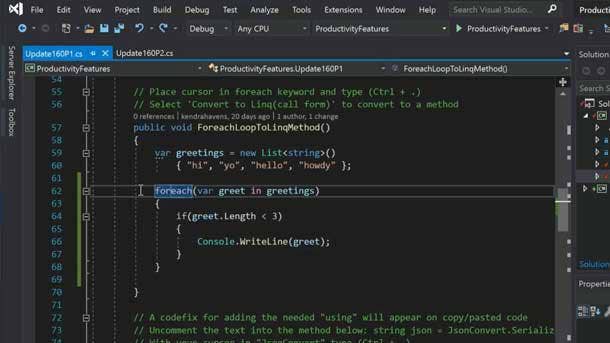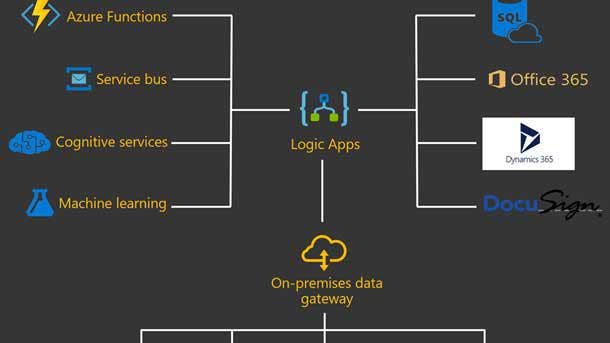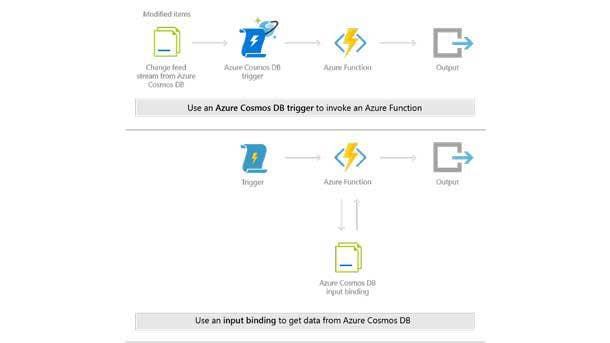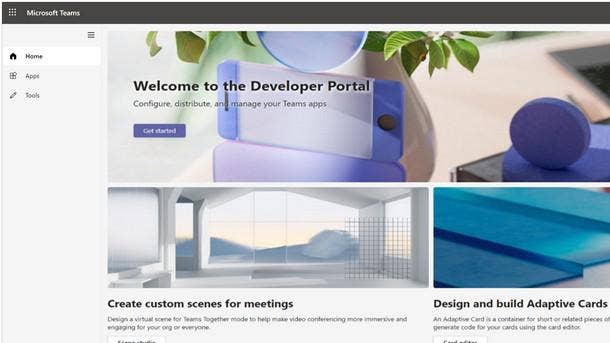Scott Guthrie’s 5 Boldest Remarks At Microsoft Build 2021
‘No other cloud vendor offers this fully comprehensive developer experience and overall platform capabilities,’ Scott Guthrie, Microsoft executive vice president of the Microsoft Cloud and AI Group, said at Microsoft Build.

Developers win with the increasingly integrated suite of cloud-based products from Microsoft, said Scott Guthrie, executive vice president of the Microsoft Cloud and AI Group.
Developers use Microsoft 365 and Dynamics 365 to connect with employees and reinvent business processes “in a SaaS (software as a solution)-based way,” Guthrie said in his keynote Wednesday at the virtual Microsoft Build conference. Power Platform stitches solutions together to accelerate digital transformation. And GitHub and Visual Studio provide developer tools and services, with all of these tools coming with built-in security capabilities.
“No other cloud vendor offers this fully comprehensive developer experience and overall platform capabilities,” Guthrie said.
Part of Guthrie’s keynote hit on new capabilities for Visual Studio and the ways Azure allows for app development for employees and customers, not to mention how developers can get apps to users through Microsoft Teams.
In his own keynote earlier this week, Microsoft CEO Satya Nadella said that Microsoft is a company built by developers for developers first, and its ambition is to be the platform for platform creators.
“From GitHub to Visual Studio, we provide the most comprehensive tool chain and services for every developer, every app and every platform, so you can rapidly go from idea to code and code to cloud,” Nadella said
Here’s what else Guthrie had to say.

New Visual Studio Enhancements
Microsoft has the most comprehensive tools and platforms for developers to use — as well as the teams that are on — to leverage, to code, collaborate, and ship solutions from anywhere.
There are tools that have integrated collaboration capabilities so that you can work across the team, so that you can have your entire team collaborate securely together.
You can use your favorite languages, open source frameworks to make sure that you can leverage the full ecosystem that’s out there, regardless of your platform of choice. You can build, test and deploy all of your code to the cloud using the great set of GitHub capabilities and Visual Studio capabilities that we provide.
We just released a new version of Visual Studio 2019 we call the 16.10 release. This includes a bunch of great productivity enhancements for .NET and C++ developers, enhanced tooling support, as well as improved container and Azure tooling features, including support for our new Azure API Management, all built into the IDE (integrated developer environment).
We also announced the new version of Visual Studio, which we are calling Visual Studio 2022 This is going to be the first 64-bit native version of Visual Studio, which will bring a lot of great performance and scalability improvements to developers working on large, complex projects.
.NET 6 marks the completion of our journey to really unify the .NET ecosystem. .NET 6 Preview 4 is now available which unifies the .NET platform while also introducing new innovations — like C# 10, .NET Maui, and Blazor — that enable you to build cross-platform, native mobile and desktop apps for Android, Mac OS, iOS and Windows, all using a single codebase.
Visual Studio and .NET are the perfect complements to this larger developer set of capabilities. Visual Studio, GitHub and Azure, in particular, enable developers to focus on building apps and not have to worry about all the infrastructure that’s required in order to run them.
With Visual Studio, GitHub and Azure, you get a seamless experience that enables you to focus on your code and deploy and get it to the cloud using your favorite languages and platforms of your choice so that you can code, collaborate and deploy applications securely across the team anywhere you want.

New Azure Capabilities For App Building
One of the things that’s great about Azure is the power of all the built-in developer capabilities that we deliver as a service on it. We have hundreds of services on Azure that you can take advantage of as a developer to build great applications. Things like web apps and serverless functions and Logic Apps you’re very familiar with, they’re used now by millions of developers around the world today.
Yesterday, we announced a preview of some great new set of Azure capabilities that are going to now allow you to take these same services that you’ve used inside Azure and build applications that can now use them and run anywhere whether it’s on Azure, across the on-premises environment including bare metal as well as VMware deployments, as well as even other clouds like AWS and GCP (Google Cloud Platform).
Any Kubernetes cluster around the world running in any environment can now be connected through what we call Azure Arc. You can now take advantage of these services on top of that cluster as well.
You can now innovate faster by using our built-in Azure application services and have this beautiful model where you can focus on your code and not have to worry about the underlying infrastructure that it’s running on top of.
This means you don’t have that kind of trade off productivity for portability. You can now run it everywhere. It also means you have a higher level set of capabilities that you can run on top of Kubernetes so you get some of the flexibility that Kubernetes provides, as well as the portability that it provides, but an even richer set of capabilities that enable you as a developer to build applications fast.
This also gives you a great way as a developer, to work with teams on the operation side to be able to run and monitor the applications in a multi-cloud approach. The power of all this is through something we call Azure Arc, which is a key element of our multi cloud hybrid strategy
What Azure Arc provides all up is this notion that you can go ahead and do cloud operations, anywhere for your cloud applications.
We’ve also announced — and now support — the ability to run, for example, our database services as well on top of Arc. The combination of all of this gives you just tremendous flexibility to again build solutions that ultimate portability can be used everywhere. With Azure Arc, you have a single pane of glass for management and operations and monitoring. You can apply Azure Policy and Governance controls as part of it. Azure Arc works with any CNCF (Cloud Native Computing Foundation)-conformant Kubernetes cluster, which makes it possible to use Azure application services, data services and infrastructure services literally anywhere to accelerate your innovation faster.
I talked about cloud native apps and our developer tools. Obviously, one of the key ingredients of all of those apps is the data that they store and the AI that works against it. With Microsoft Azure and our overall cloud platform, we now provide an incredibly rich set of services and capabilities that enable you to do this.

Azure Cosmos DB Goes Serverless
One of the services that’s been very differentiated for Azure over the last couple of years that developers really love is our Azure Cosmos DB database.
Azure Cosmos DB is our fast, ultra-low latency, NoSQL database. It’s designed for single millisecond response time. It supports a wide variety of different developer APIs, including popular ones like Cassandra and MongoDB, Gremlin graph and others.
It enables you to build petabyte scale applications that can even run across multiple, simultaneous Azure regions in an active-active-active or more configuration. We have customers today that are literally scaling to trillions of transactions per day against the single database to support customers all over the globe.
In particular we announced the general availability of our Cosmos DB serverless support. With serverless, developers no longer need to provision a database that you’re always built for regardless of how it’s used. Instead, with serverless capabilities, you only pay us based on the actual database operations that you perform. There’s no minimum charge or capacity planning required. Instead, you basically just pay for the request against your database service, which provides tremendous flexibility in your pricing and also how you can scale your application.
We also this week introduced our new integrated cache support for Cosmos DB which can boost performance by up to 300 percent on your workload and reduce your cost by up to 96 percent for heavy-read workloads inside your application.
We also announced some new enterprise-grade security capabilities, much richer role-based access control support, as well as something we call always encrypted, which is particularly important in this ultra-secure world that we now live in.
We’ve made some really great free-tier enhancements. That’s been something a lot of people often asked for in the past. ’Hey, I love Cosmos DB. But can you help me get started with it without having to pay a lot of money?’ The great thing with Cosmos DB now is you get a free 25-gigabyte database that can do 1,000 requests per second with no cost ever. You can use that to start building applications faster and easier than ever before.

Using Apps Built In House In Teams
One of the things that we’ve also seen this past year has been, as people have pivoted to work more from home or in a hybrid way, the need to collaborate in a remote fashion across organizations and across teams.
One of the key applications that’s been essential for connecting all these employees and all these people around the world has been Microsoft Teams. There’s now more than 145 million daily active people that use Microsoft Teams in a pretty essential way to run their businesses.
Part of what makes Teams powerful is not just that you can do video conferencing or text chats. But you can also integrate applications as part of that overall experience and leverage the Microsoft Cloud as a collaborative application development experience, that you can integrate your business processes in your applications within.
With the Microsoft Power Apps offering that we have, professional developers can also now accelerate delivering workflows and the delivery of business applications to all 145 million of these users.
We see increasingly the need for you to be able to build these types of business applications and asynchronous collaboration scenarios faster.
Part of what we’re trying to do with the Microsoft Cloud all up is enable professional developers to work with a business analyst inside an enterprise as well as people building simple automation workflows or front-end experiences and combine all of this into solutions that can be deployed quickly and leveraging all the collaboration capabilities that are built in as part of the Microsoft Cloud.
We now have a really great development workflow that enables that.

Azure-Built Apps For Employees And Customers
You can build applications inside Azure, not just for employees inside your organization or for customers that are end users, but also package them up into business applications or SaaS-based delivered solutions that you can then sell both to end users as well as to other businesses and deliver in a SaaS-based way.
Part of what makes the Microsoft Cloud powerful as I talked about earlier is the rich set of capabilities that we deliver, not just with Azure but with things like Office 365 and Dynamics 365 and the Power Platform.
What’s great as a developer, you don’t always have to start with a blank Kubernetes cluster or blank VM. You can actually start by taking advantage of some of these built-in developer components like I talked about just a moment ago with Teams and with the Power Apps platform when you’re building your solutions in your applications.
This allows, for example, if you want a full customer service solution to start with Dynamics 365 and then build custom UI or custom workflows around it, then you’ll be able to leverage an incredibly rich set of CRM capabilities that we provide that you can then adapt as part of your SaaS-based solution.
I definitely encourage developers, if you haven’t already looked at all these components, to start looking at some of these bigger components and some of these bigger building blocks that you can leverage. Just like you can leverage APIs and libraries in the past, this allows you to do even more and deliver even more value to your customers.
We not only provide horizontal support like CRM, but we’re also providing richer and richer industry support. This allows us to deliver features that have even more sophisticated capabilities and components tailored for a specific industry. We now have five industry clouds with built in vertical industry components that you can leverage as part of your solutions.